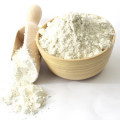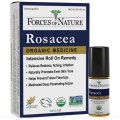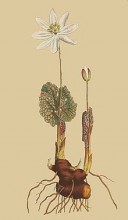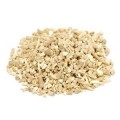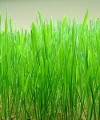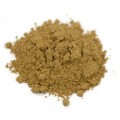 Loading... Please wait...
Loading... Please wait...- Home
- About Us
- Shipping, Returns & FAQ's
- Contact Us
-
For Your Information
- Canadian Customers Have a Choice if Shipping Via UPS
- Aura Cacia Homemade Aromatherapy Recipes
- Bella Nella Altered Art & Paper Crafts Blog
- Forms of Herbal Preparations
- Laundry Tips To Conserve Energy Blog from The Laundress
- The Story of Frontier Natural Products Co-Op
- Sovereign Silver Hydrosol and Aloe Protocol Stops Downward Spiral of Gut Dysbiosis
- Disclaimers
- Recommended Links
- RSS/Recent News
- The Story of Typhoon Housewares
- Reviews/Testimonials
- Raw Ingredients for Mfg
Bloodroot Cut/Powder/Whole/Extract Organic Bulk
Product Description
Bloodroot is a flowering groundcover in the poppy family that is native to northeastern North America. It is so-named because its orange root yields a poisonous red sap that Native Americans used as an insect repellent.
Bloodroot was used historically by Native Americans for curative properties as an emetic, respiratory aid, and other treatments.
Bloodroot is used to cause vomiting, empty the bowels, and reduce tooth pain. It is also used to treat croup, hoarseness (laryngitis), sore throat (pharyngitis), poor circulation in the surface blood vessels, nasal polyps, achy joints and muscles (rheumatism), warts, and fever.
Some people apply bloodroot directly to the skin around wounds to remove dead tissue and promote healing. During the mid-1800s, bloodroot extracts were applied to the skin as part of the Fell Technique for treatment of breast tumors.
In dentistry, bloodroot is used on the teeth to reduce the build-up of plaque. Plaque is a film of saliva, mucus, bacteria, and food particles that can promote gum disease.
Bloodroot contains chemicals that might help fight bacteria, inflammation, and plaque.
The root has long been used by the American Indians as a dye for their bodies and clothes and has been used successfully by American and French dyers.
Constituents -- Alkaloids Sanguinarine, Chelerythrine, Protopine and B. homochelidonine; Sanguinarine forms colourless crystals. Chelerythrine is also colourless and crystalline. Protopine (also found in opium) is one of the most widely diffused of the opium alkaloids. The rhizome also contains red resin and an abundance of starch.
Medicinal Action and Uses -- Emetic cathartic expectorant and emmenagogue, and of great value in atonic dyspepsia, asthma, bronchitis and croup.
Of value in pulmonary consumption, nervous irritation and helpful in lowering high pulse, and in heart disease and weakness and palpitation of heart of great use. For ringworm apply the fluid extract. Also good for torpid liver, scrofula, dysentery. It is applied to fungoid growths, ulcers fleshy excrescences, cancerous affections and as an escharotic. Sanguinaria root is chiefly used as an expectorant for chronic bronchitis and as a local application in chronic eczema, specially when secondary to varicose ulcers.
In toxic doses, it causes burning in the stomach, intense thirst, vomiting, faintness vertigo, intense prostration with dimness of eyesight.
Herbs may be very helpful and conducive to good health; however, used carelessly, many dried herbs and roots can be harmful and even toxic.
It is strongly recommends that people planning to use any herbal or root extract consult with a licensed naturopathic doctor before using such a product.
Botanical Name: Sanguinaria canadensis
aka: Pauson, Blood Root, Bloodwort, Coon Root, Indian Plant, Indian Red Paint, Pauson, Red Indian Paint, Red Puccoon, Red Root, Sang-Dragon, Sang de Dragon, Sanguinaire, Sanguinaire du Canada, Sanguinaria, Sanguinaria canadensis, Snakebite, Sweet Slumber, Tetterwort
Origin: USA
Notes: Kosher Certified. Non-irradiated. Non-GMO.
Specifications are subject to change without notice.
* FDA disclaimer
You Recently Viewed...
Currency Converter
Choose a currency below to display product prices in the selected currency.




